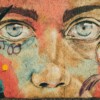Click here to listen to the episode on Spotify
In the forty-second episode of the “Saturdays at Seven” conversation series, Todd Ream talks with Cyrus Chestnut, Master Instructor of Jazz Piano and Improvisation at Howard University. Chestnut opens by talking about the process he experiences when composing. While still writing notes on a page, Chestnut contends that neither composition nor performance follow predictable patterns. The Holy Spirit is in the process and, in particular, becomes evident in improvisation. The process of composition and performance will always lead somewhere but, according to Chestnut, one must always be willing to follow where the Spirit may lead. Ream and Chestnut then talk about the teachers who led Chestnut to love the piano and the balm of healing such a love can offer people. While grateful for the teachers with whom he studied at Peabody Preparatory and Berklee College of Music, Chestnut’s father remains Chestnut’s first and most influential teacher. Ream and Chestnut then conclude their conversation by discussing the discernible presence of the Spirit in the structure of musical notes as well as in the beauty afforded by human collaboration such as Chestnut’s recent performance with the Cecilia Chorus and Orchestra at Carnegie Hall.
- Cyrus Chestnut’s My Father’s Hands (HighNote Records, 2022)
- Cyrus Chestnut’s Kaleidoscope (HighNote Records, 2018)
- Cyrus Chestnut’s Midnight Melodies (Smoke Session Records, 2014)
Todd Ream: Welcome to Saturdays at Seven, Christian Scholar’s Review’s conversation series with thought leaders about the academic vocation and the relationship that vocation shares with the Church. My name is Todd Ream. I have the privilege of serving as the publisher for Christian Scholar’s Review and as the host for Saturdays at Seven. I also have the privilege of serving on the faculty and the administration at Indiana Wesleyan University.
—
Our guest is Cyrus Chestnut, widely acclaimed pianist, composer, and Master Instructor of Jazz Piano and Improvisation at Howard University. Thank you for joining us.
Cyrus Chestnut: Oh, thank you so much, Todd. It’s good to be here. Good to be with you.
Todd Ream: Several music critics argue that you’re the greatest jazz pianist of our time. For example, one critic when writing in Time Magazine argued, “What makes Chestnut the best jazz pianist of his generation is a willingness to abandon notes and play in space.” However, you’re also a widely known composer. Would you begin by sharing the process you undergo when composing a song and then perhaps also aligning songs for an album?
Cyrus Chestnut: The process of composition, it starts with the idea. And for me inspiration can come from so many different points of view. For me, composition is not just about sitting at the piano and saying, okay, let me, let me figure something out. Although that part, it also is a part of what I do.
The song of the Lord, I guess I could say: I think I could say that the song of the Lord, it’s not just at the piano. It’s with me as I walk day to day. And so a melody can find its way to me at any given point. A lot of times, the way how I compose, I do a lot of composition away from the piano. And I like to do that because it makes me really dependent. It makes me really rely on the actual melody, the actual rhythm versus sitting at the piano and relying on a lot of theories.
Now, the theories are important, but once again, sometimes the song of the Lord goes a little bit against what we think of theory. And so I try to do my best to just allow myself to be open to hear. And as these melodies come across, I start to write.
And once I get a draft together, then that’s when I will sit down at the piano and check my hearing and sometimes there’s certain tweaks that will have to be done to make the composition work. Sometimes compositions are logical, meaning that the movement from point A to B is very traditional, something expected.
And then sometimes the composition and/or arrangement can have non-traditional movement. What I like to say is misdirection, taking the listener in a certain direction. And when one thinks the music is supposed, arrive at a certain destination. It is intriguing, if I can say, to get to your destination from a whole different way.
I’d like to say that there are many different ways of getting from point A to point B. And that’s the challenge. That’s the challenge. Trying to figure out there’s the usual ways of getting from point A to point B but then there’s the unusual ways. And sometimes in finding something unusual, you really trigger the intrigue of the person.
So so it’s not so familiar, meaning that, oh, there’s interest. Oh, what’s happening here? So, there’s a different type of engagement, if I can say.
Todd Ream: Thank you. Can you say a little bit more about that process of checking your own hearing? What does it look like if we were to watch you or observe you as you’re checking your hearing and something is going from the melody that you hear to notes on a page.
Cyrus Chestnut: As far as when I talk about checking my hearing I will write certain things down on the paper. I’m still one of those people that has a manuscript book and I write with a pen because that’s the first, that’s the first point of entry. I’ll use technologies to clean up my chicken scratch, so to speak so it becomes a little more legible.
But as this idea in rhythm, in melody and harmony, however these elements present themselves to me, I will start to write. And then when, once done, then I will sit down at the piano and I’ll attempt to check and see if what I’m playing goes along with what I’m hearing. Sometimes it works well and sometimes it doesn’t.
And so there is a back and forth process. I’ll sit and I’ll play a piece and I might get to one place and say, you know what, I’m not sure if that’s right. So, in this moment, that’s when my study and the development and the theoretical knowledge of how to communicate via music kicks in. So that okay, well, I don’t like this movement. Maybe I need to do a maybe a little different half step movement or maybe I need to find a different tonal center to still get there.
Or if I’m writing something that says, well, you know what this sounds like something that I’ve already done, so then it’s about going back to going back to the drawing board again and also, conception in the head, writing on paper, music checking, so to speak, at the piano. And then once that’s satisfactory, then ready to present it.
Now, in the spirit of the jazz musician and the jazz tradition, I believe that music evolves. And I just did an interpretation of the Duke Ellington Sacred Concerts. And in my research, I found out by reading and also talking to people who had spent time with Duke Duke was so, he was always very much in the moment.
I was told that a lot of his sacred concerts did not get put down really on paper until he transitioned because they were always changing. They were always changing. And I think if you think about Ellington, that’s why there’s so many different versions of “Take the A Train” and so many different versions of “Satin Doll,” because he was always in the mode of creation, not necessarily recreation.
And so the reason I say that is this: once a composition is put out into the atmosphere, it will evolve. At a certain point, it will either grow to something else, it may go somewhere different. It’s not something that once I write it down, that’s the way it’s going to be for the rest of its life.
I’m skipping a little further here. Even studying at the Peabody Preparatory, I was always put in a creative mode. My whole life has always been about creation, playing in the church. Yes, I read the hymns out of the hymn book, but there was a lot of times where I was asked just to create something. And just play something. So from an early age, I was out, I was always placed in this mode of creation.
At the Peabody we would study Gregorian chants and like period of the Baroque or whatever, but it was then our task to write based on what we studied. So I was always put in a mode of, once again, a mode of creation. And so, the transition over to jazz for me is very easy because jazz at its finest is about improvisation.
I like the definition that Loren Schoenberg gave to share with me about improvisation. He said, composition is like improvisation at a slowed down pace with an eraser. And improvisation is composition at a rapid pace— I hope I said that right—with no eraser. In both situations you’re still creating. One, you create and you write it on paper and that’s what that, that thought is.
The other is still creation; you’re still communicating. It’s still very necessary to understand the principles, the basic principles of music rhythm, melody, and harmony. You need to understand about quarter notes and different pulses, quarter notes, eighth notes, triplets, 16th notes, whatsoever. You need to also understand about scales, the sound, the sound of the chord so that you can best communicate.
One can have a sound in their ear, but if you don’t know how to process what you hear and effectively communicate, then a lot of that great sound just stays locked up in your head and unable to be shared with the universe.
Todd Ream: Well, and that process of improvisation is what adds to the enormous beauty of the genre of jazz. It’s also the same thing that unless we have recordings of actual performances that drives archivists crazy because when we don’t know when the music sheets get logged into the archives, whether that’s actually what got performed or not. No, but it’s part of the beauty of it.
Cyrus Chestnut: You know, a lot of times what has been transcribed or whatever could have been a musical moment at that time. And so, just as we’re speaking together here, this conversation is not really scripted per se. We did not practice these questions and my responses. I did not write them down and I’m not reading them. They have not been edited. It’s just my thoughts right now, right in the moment.
I think music at its best is that type of communication where there’s an emotion. One feels a certain emotion and so you try to take sound to match that emotion, to, to soothe or encourage one, encourage the individual.
Todd Ream: Thank you. You mentioned your time at Peabody, which you started when you were nine years old, and then eventually you went on to study at Berkeley College of Music. Before asking more about those experiences, though, I’ve got to ask about where you first learned to play, which was with your father at Baltimore’s Mount Calvary Star Baptist Church. At what point did your father, and perhaps also your mother, know you were given a gift, in terms of the piano?
Cyrus Chestnut: Well, I guess that’s probably something you would have to ask my mom. From what I know and what I remember, my father would have told the story about how somewhere between two and three, well even before that, my father taught himself how to play piano. He played in the church pretty much until the point he transitioned into over to the other side.
My mom sang in the Church and so my mom tells the story of when I was in the belly, so to speak, my father would play and my mom would sing. So even before I officially got here, I was hearing music. My father would put me in the bassinet and start playing and I would just get very quiet and just, he said somewhere between two and three, I guess I got the strength to climb up on the piano bench. I climbed up on the piano bench and I just tried to do what he did. And so I kept doing it. I kept doing it. I kept doing it. I kept doing it. And so he went out and bought me two books, the Leila Fletcher Piano Course.
And he started to show me these, show, show, show me the basics of piano and he also said this too. Shortly before he passed away, he said, son, I could leave you an inheritance, but I believed if I got you to music, you’d be just fine. And so therefore, I’m grateful to God for putting that thought in my father’s head and passing it along to me because I am okay, inheritance or no inheritance, I have music and that’ll take me, that’ll take me for the rest of my days.
So you did that and you started showing me around five years old. Um, I had my first lesson with a quote unquote professional teacher, Ada Jenkins, in Baltimore, Baltimore, Maryland. And I just told this story just about a day or so. My father had a 64 key piano, a spinet piano, an acoustic piano with 64 keys. That’s how I learned to play on.
And so Miss Jenkins, she asked me to, one of my first assignments was to tell her how many keys were there on the piano. So I went home and I counted 64 keys, came back to Miss Jenkins and says, she asked me, how many? I said, 64. And she gave me this puzzled look and said, you sure? I said, yes, ma’am. She said, go on back home and count again.
I go back home, I count the keys on the piano, once, twice: 64 keys. I came back the next week, Miss Jenkins, my piano has 64 keys. Really? She asked me to count the keys on her piano. I said, well, your piano has 88 keys. She says, okay. So I said, your piano has more keys than mine.
So I go back home and Ms. Jenkins called my parents and they said, I want y’all to sit down with him and count the keys on the piano. So we all sat there, the three of us. We counted the keys on the piano. And we agreed that there were 64 keys. My father went into the kitchen, had a conversation with Miss Jenkins. And about a week and a half later, there was an 88 key piano in the house.
So, he invested. He and my mom invested much into me because I think they, they knew and they saw something that maybe at a young age, I didn’t really realize that used this, the journey of music was for me.
And so, I just recently opened at Carnegie Hall. And just did, as I said, the Duke Ellington Sacred Concert at the Kennedy Center. Two major headlines in two major institutions. My mom was there. And I said, well mom, I said, I hope you can see the return on your investment. I wish my father could have been there to see it. But I believe that he’s smiling down, smiling from ear to ear. But to see what he said to me is coming to fruition.
I believe I’ve been placed here to play music. I could do many other things, but I believe I was given this gift to be able to change the universe, to affect the universe. And so that’s what I do to the best of my ability. And my prayer is that it helps people. And I hope what I do is pleasing to God Almighty. And therefore, the assignment that’s been placed on my life, I would like to do the best to complete it. And then when I’m finished on this side, then I go over and hang out with Art Tatum and the cats and talk about it.
Todd Ream: Thank very much. That is, that’s quite a gift your parents and the Lord offered you through them. As I mentioned when we started, you also, in addition to serving as a composer and performer, you teach at Howard University. As a teacher then what do you believe is the greatest gift you can offer your students?
Cyrus Chestnut: Sharing my experiences, encouraging them and empowering them to the best of my ability, helping them to believe in what’s been placed in them. I often say, if I can do it, if I can headline Carnegie Hall, so can you. You just gotta believe it. You gotta do the work. I teach because I love to do it and I teach because as many hands were extended to me to help me, and still hands are out there extended to me, then I have to pass it on.
I have to extend my hand to that next generation, to help, to help them become who they’re supposed to be. I don’t expect them to go to school to become the Art Tatums or Ella Fitzgeralds or Sarah Vaughan. Sarah Vaughan told her story. Billie Holiday, Ella Fitzgerald, they all told their stories. Nobody’s gonna tell their story better than them. They lived it.
But this next generation, they have to tell their story. Now, they can be inspired by history and by the musical ancestors, of course. But to quote Betty Carter, jazz is about finding out who you are. And so it’s my desire to help them find who they are, to come to grips with who they are and to be able to share that and do what they’re supposed to do on this earth.
Todd Ream: To change subjects here just a little bit and ask you a little bit more about connections between jazz and its genre as being, in your estimation, deeply religious. You’ve often talked about the connection between jazz and God and jazz is again, that musical genre that has deeply religious orientation to it. Would you unpack for us some of those connections and perhaps even offer a few examples of where those connections are made and how those connections are made?
Cyrus Chestnut: I can first talk about Thomas Dorsey. Thomas Dorsey, who is known as the Father of Gospel Music, Thomas Dorsey was Georgia Tom, who was a great blues pianist, wrote a whole bunch of blues compositions, I believe, for Ma Rainey, Bessie Smith, through a situation, through a life-changing situation, his text changed.
And became, I think, what he called Gospel of the Good News. However, the engine didn’t change. The same triplet feeling stayed there. The same movement, the same blues movement stayed there. If you really, if you look at it, from going from one to four back to one to five and all that same bit traditional blues progression stayed there.
And furthermore, if you think about within, I’d say the African-American culture, I’m finding out that the triplet is very much there, hence what I like to say, the swing feel. Growing up in Church, there were certain hymns that we sang out of the hymn book, but there was this term called gospelizing, hope I’m not getting too technical here, but every, every quarter note it was more like it was, it was, it was done in, in divisions of three.
So if something was four, four—the way now rather than is going on, two, three, four, we put the triplet to it. One and a two and a three and a four. Okay. So four, four became twelve, eight. If it’s three, one, two, three, it’s one and a two and a three and a— and so and if you hear how, like if you think about Mahalia Jackson and all, you could go back to Scott Joplin and hear and although the text is different, the rhythm is still there Scott Joplin Jelly Roll Morton.
There’s a certain thing, there’s a certain groove that comes very deep out of the African-American culture that even to this day, for instance, even if you think about, oh wow, like say even Twinkie Clark and the, and the Clark sisters you even, you even hear certain elements of that swing.
As far as I will say in regards to that rhythmic engine that finds its way in jazz, that’s in gospel, it’s this underlying current that’s there. AndI mean, one doesn’t have to take my word for it, just do the research. You can just do the research.
The good Lord is very crafty and He knows how to communicate in so many ways. I think a lot of times we think that, okay, in order for it to be spiritual, it has to be done in one specific way. But I think that there are many different ways and if you really think about the motive of the person that should tell a lot about the music.
And so for me, and whose I am, and where I come from I come out of the Church, I’m still in the Church. And so, whether I’m playing in the stadium, or playing a Sunday morning service, or playing a concert hall, or playing a jazz club, I am who I am. And I’m not ashamed to present that.
Just a couple days ago, I was down in eastern Maryland. A whole jazz concert series and in the middle of the concert, I did a 3/4 jazz waltz version of “There is a Fountain Filled with Blood.” So on a Saturday night, people heard a communion hymn.
I have to be honest with who I am. And I think we have to be willing to be a witness wherever. It’s not just in the, in the designated area. I think if we think about the life, the life of Jesus Christ, he just wasn’t just only in the synagogue. He was out and about spreading the Good News. And so therefore, I believe that’s what we have to do. We gotta be able to get out there and spread the Good News.
And because there’s enough tension out in this world now, but be it as it may, you still have to put a balm of healing out there. And sometimes for me, music is a way of being able to reach people who understand what I’m, who might, they might, we might not speak the same verbal language, but they can feel what I’m about by playing music.
Todd Ream: I’ll say this: your most recent album, My Father’s Hands came out as I was going through a difficult time professionally and this song, “Everything’s Going to be Alright,” that was six minutes and 31 seconds of pure joy every time I’d pop that.
I’m still a CD player here. Every time I popped that in my car and head to work, it was six minutes and 31 seconds of pure joy that then lingered long after that six and 31 seconds.
Cyrus Chestnut: I think the song you’re talking about is called “Working Out Just Fine.” And that was, that was one of my father’s that was one of his very important catchphrases later on in his life. I said, daddy, how you doing? He says, oh, everything’s working out just fine. He’s like, don’t you worry, everything’s just going to work out just fine.
Todd Ream: Which I couldn’t help, but note on that album too, in terms of how it was arranged, the song that it immediately follows too, which I believe the full title is “I’ve Got to See Jesus.”
Cyrus Chestnut: “I Must Tell Jesus,” yep. That was one of his favorite hymns. And in that moment, I think about it now as I sat down at the piano to record it, I wanted to play it, but I had no idea how it was going to happen. Peter Washington and Lewis Nash, they went in the control room and I said, okay, I’m gonna sit down and do this. So I took a breath, placed my hands on the piano, and then that’s what happened.
I think sometimes there’s beautiful magic in these moments, you know. It’s a beautiful thing to allow yourself to yield to the spirit and be moved by the spirit. A lot of times we want to have control, yeah I’ll say, over what we do and how we do it but then sometimes, you just have to really, just kind of just yield and just stretch out and have some faith.
I tell a lot of people, tell my students a lot in the case of improvisation, improvisation takes faith. You’re going in a realm that you don’t necessarily, that you, you think you know, you’re not quite sure what’s going to happen, but you, but you trust that as you start to go through, you’ll make it through. And so the realm of the unknown can be very rewarding, but it can be very scary too.
But you gotta have the faith to go through because if you don’t take the chance, if you don’t allow yourself to go there, you— sometimes I think, I talk about the musicians, we get in the way. You know? We want to have everything completely worked out. But then sometimes, all we can do is allow ourselves to be a conduit. And so the conduit is filled with knowledge of rhythm, melody, and harmony.
But you gotta let the spirit work through the conduit. If that makes any type of sense. And as the spirit works through the conduit, then music happens. It might be in a traditional way and it may be in a non-traditional way, but sometimes, a lot of times I do my best to operate in this, operate, let this be, be the best conduit I can. That’s what I’m getting to.
Todd Ream: You mentioned just a few minutes ago, your most recent album, My Father’s Hands. You’ve recorded well over a dozen albums, but I’d like to ask you about this one, if I may. Would you please elaborate, say, on the title and your inspiration for that album?
Cyrus Chestnut: That was for my dad. Really, my father was the inspiration for that. It’s interesting. A lot of times, as I look at my hands now, I see his hands. I think now, as he’s transitioned I get time to reflect on you know, he has imparted to me, what he will forever mean to me.
That collection of songs was his spirit, just to share his, his spirit. He was a person that wanted to make a difference. He’s a devout Christian man and he loved Christian education. He loved music too now. And he did everything he could to serve in the Church. Where it says, all I’m trying to do is serve the Lord to the best of my ability. And that he did.
I remember it’s like, there’s Sundays after Sundays at a certain point when his hands start to get frail, that didn’t stop him from sitting down at the piano playing. Even when there were times during a devotion service, some of the other devotional leaders may not have wanted him to play. That didn’t stop him from playing. It didn’t stop him from serving.
He led a Bible study for many years and started from just a handful of people to over a hundred people from all over the city of Baltimore wanting just to come and be a part of that discussion. You know? Again, he did everything to serve and make a difference.
And so thinking of him again, thinking about just him, I wanted to do something like that. Just to say thank you isn’t enough. I think the best way I can say thank you is just to continue the journey that he encouraged me to do, to continue on that journey of when he said, son, if I thought if I could get you to music, you’ll be alright.
And so just to let him know that, yeah, then I’m alright. You know, you’ve got me the music and because of that, I’m going to be okay. Come what may. Come what may. Storms come, storms go. I have music. You know? When in the lowest of the lowest I could still play a song and so that was the main engine for that. All of the songs on that record have something to do with him.
Todd Ream: Thank you. I appreciate that. Of all those albums though, that I mentioned oh, well over a dozen, is there one album or maybe two or maybe three, depending on how you want answer this question that you would say is more indicative of your style as a composer, and then is there perhaps an album or two or three that’s more indicative of your style as a performer?
Cyrus Chestnut: That’s a difficult one because, um…
Todd Ream: I’ve been saving that one till— we’re almost to the end— so I’ve been saving that one there.
Cyrus Chestnut: As I reflect on the records that have been recorded, a lot of them feature my original compositions or arrangements of standards. And, once again, I was never one of those recreating, recreation people. I can tell you about the story about um, Betty Carter, admonishing me about playing the exact version of Miles Davis’s, “If I Were a Bell.”
She told me she didn’t have me in her band to play something that she already heard. She knew it better than I did because she was there. And she said, well, okay, I do understand that you’re trying to learn this here. But once you learn it you gotta, how does it relate to you? You know?
And so, every record, every record, every record that I’ve done, maybe for, maybe the exception of the, the earlier Japanese records, some type of records I did for Japan, they brought a certain list of music of repertoire that you were supposed to choose from. And so maybe, but then they might allow one, one or two original compositions.
But when I started on Atlantic, I was writing my own music. The records all on, all of the records on the Atlantic label, they feature a lot of my own compositions. Even a lot of some of the compositions are original arrangements. I did a record Kaleidoscope, which was kind of an interpretation of great classical themes, more like, no, Kaleidoscope was more like an impressionist type of themes, you know?
But once again, it wasn’t like trying to recreate something. I have to go back to Dr. Robert Stone, a great teacher at Howard University. He said that jazz is about creation, not recreation. And then if I go back early in the conversation and how I was telling you how at Peabody, we studied Gregorian chants and I had to create my own Gregorian chants and things. So I was always placed in a mode of creation.
So I would have to really go back. I don’t think I’ve ever did a record of where I just actually just covered something. Or if I did cover it, it’s going to come from a different way, a different point of view. Cause that’s just deeply rooted in who I am.
Todd Ream: That first song that you performed that I heard, came across on the radio, we’re fortunate to live…. Unfortunately, we don’t have a 24 hour jazz radio station here where I but we have one splits the genre, public station, that splits the genre afternoons and evenings all jazz and they were playing your interpretation of “Bag’s Groove.”
And I stopped my car and I got on the internet to look it up because it didn’t say, and I was afraid they weren’t going to say at the end exactly what it was, and I looked it up. And I went home and bought it. So yeah, it got me, got me to stop my car. Now, I pulled over too. I didn’t just stop in thee middle of the street.
But so yeah, I mean, talking about, I mean, great music, but then great music keeps giving great music when placed in the right person’s hands.
Unfortunately, our time is beginning to run short but I want to ask you, as we close, about an important commitment that you’ve exercised over the course of your career and especially in recent years, and that’s collaboration with other musicians.
You mentioned your recent performance at Carnegie Hall. And I want to ask you in particular about that effort and about that collaboration with the Cecilia Chorus of New York that culminated in a performance of your world premiere of “Power in the Blood,” alongside a performance of Ludwig van Beethoven’s oratorio, “Christ on the Mount of Olives.”
Would you please share your thoughts concerning the pairing? We’ll start here concerning the pairing of those two pieces and in what ways do they complement each other?
Cyrus Chestnut: I think they’re two, I think they’re two different points of view. It’s a compelling, compelling story, from two different points of view. “Power in the Blood” is kind of a, I would say, a part of a larger work I did entitled “The Saga of the Cross,” which was, I believe it was done in 2017. It premiered at the Abyssinian Baptist Church.
And basically what it was, it’s the Easter story. It’s the Easter story told from the African-American point of view. Earlier, you remember I was talking about how we would, how hymns were interpreted. The concept of gospelizing. And so these hymns that told this beautiful love story of the Father sending his Son, it was my intent to, use the full African diaspora, not just a quote unquote jazz thing or whatever, or a gospel thing, but to be able to bring the whole, bring, bring the whole diaspora together. And once again, that’s involving too.
So my wife Charlotte was talking with Mark Shapiro about possibly doing some collaborations and we got and started to talk about possible projects and I told him about “The Saga of the Cross” and I presented some things which was, which were done and he got excited about it and so we agreed to try to take a portion of it because the whole work is over two hours because it’s, it’s music and narrative as well.
But even that, for even that, there was some new material added and so in the spirit, as I was talking earlier about Ellington, it’s just not just, it always evolves. It always evolves. And so, to be able to present that at Carnegie Hall, a jazz trio, with 150 voice chorus, in that mix of that magnificent place, that’s something very, very, very special. It was a moment like no other.
And, and again, we’re talking about joy. If you hear me talk a lot, it’s always about sending someone away feeling better than when they arrived. Whatever it is. Whatever it is. I like to be able to spread the feel good. If that, if you understand what I mean. You know, I wanna spread some feel good, you know? I’ve said earlier that there’s enough, um tension in society now. So, why not put out a bomb of healing? Something to bring people together singing. So here it is.
We are doing that project, bringing people of all walks of life together. And so hopefully one will see just the unity in all different walks of life coming together, singing this powerful music. We spend a lot of time being separate, but at a certain point, it’s about high time for us just to kind of celebrate who we are.
And if we’re going to be one people, if we’re going to be one nation under God, we’re not all one, just like it’s I believe, a paraphrase in Scripture talk about the body. The body is not one, just one hand. You know? It’s different. Different parts that make one. But if the hand decided, if he just wanted to do his thing and you know, oh, I don’t have nothing to do with the foot. You know, that’s not a good thing. Everything works together for a common good. The body doesn’t, I guess, could work without a hand, but it works better with the hands.
And I’m saying all that then, it’s just some feel good and bring people together from all walks of life. And then send them away feeling better than when they arrived and maybe just have this music. So to have just people just understand this is who we are. This is who we are, you know? Yeah, I come out of a rich culture and a rich tradition and I’m very proud of it. And I want to share it every place I can, because that’s what I believe in. I was given this gift to share.
Todd Ream: Very much appreciate your willingness to share that gift with us today too. Thank you.
Our guest has been Cyrus Chestnut, widely acclaimed pianist, composer, and master instructor of jazz piano and improvisation at Howard University. Thank you for taking the time to share your insights and wisdom with us.
Cyrus Chestnut: Thank you so much. Thank you so very much.
—
Todd Ream: Thank you for joining us for Saturdays at Seven, Christian Scholar’s Review’s conversation series with thought leaders about the academic vocation and the relationship that vocation shares with the Church. We invite you to join us again next week for Saturdays at Seven.























